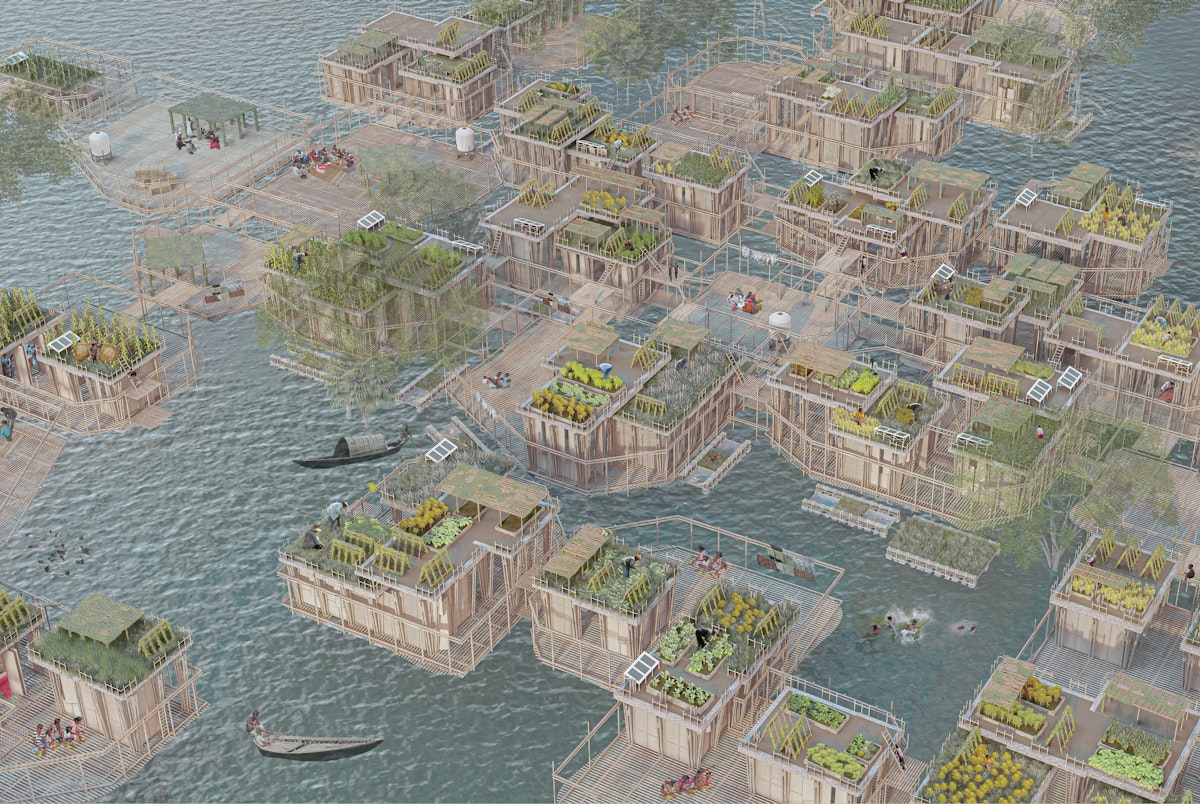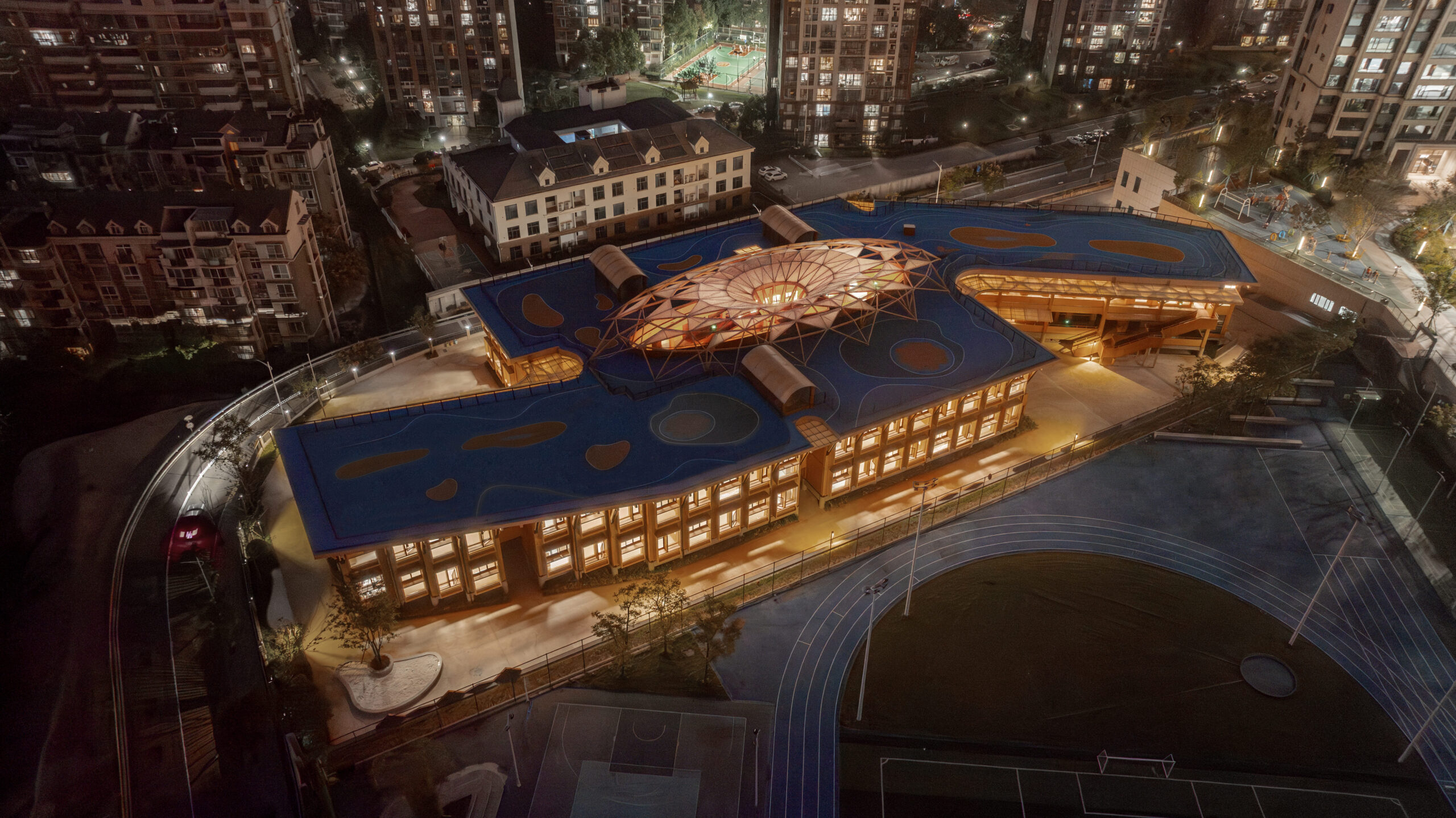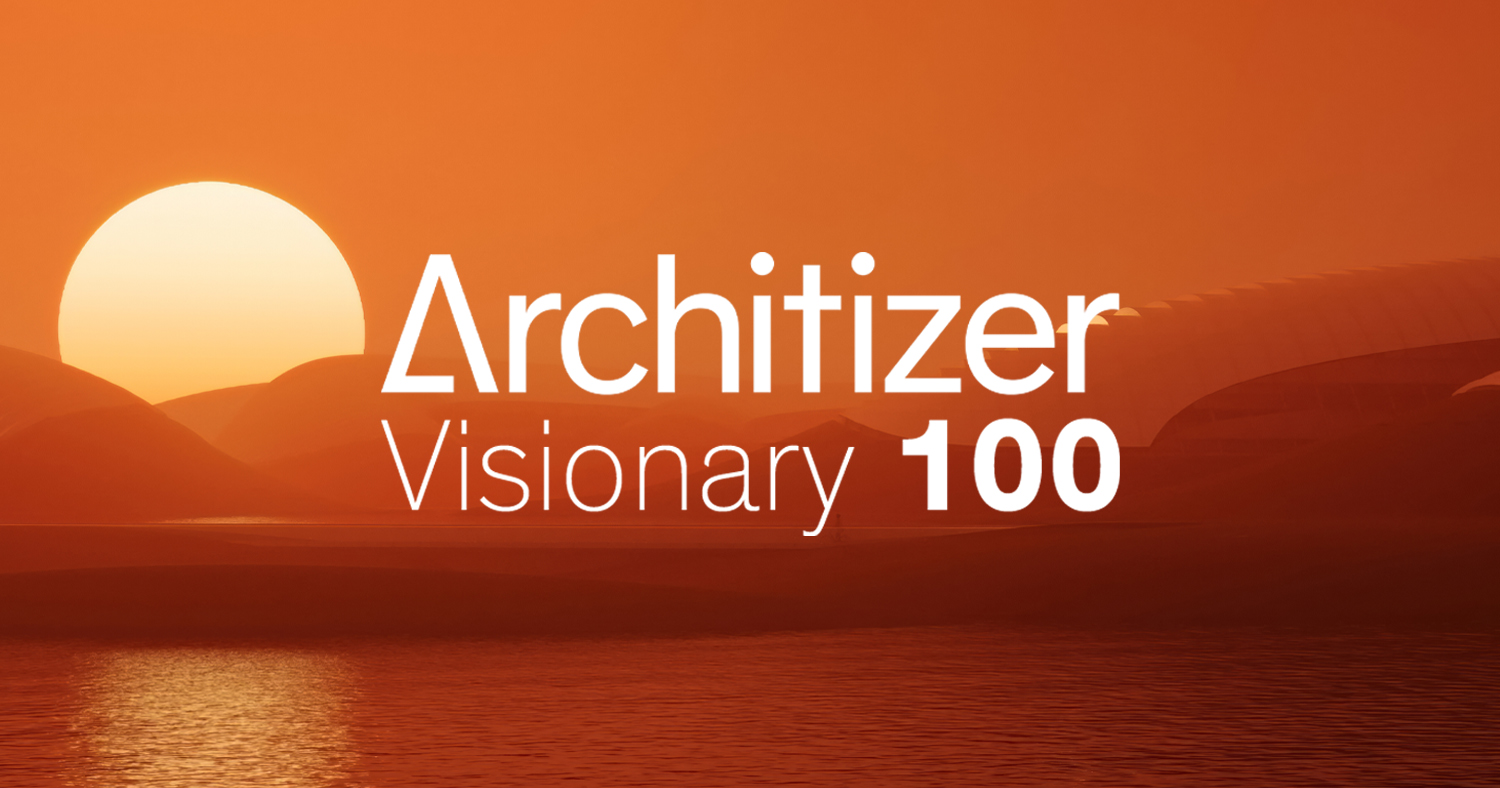Levi’s Stadium 2026: 10 Architectural Facts to Know Before Super Bowl LX

Architects: Want to have your project featured? Showcase your work by uploading projects to Architizer and sign up for our inspirational newsletters.
Sports venues today are as much about technological innovation and experience as they are about architecture and engineering prowess. From the Tottenham Hotspur Stadium in London to the Mercedes-Benz Stadium in Atlanta or the Lusail Stadium in Qatar, generations of stadiums have showcased the latest in construction advancements and fan engagement. Levi’s Stadium in Santa Clara, California, is no exception.
Completed in 2014, the design by HNTB Architecture embodies Silicon Valley’s innovative spirit. The $1.2 billion stadium was celebrated as one of the most technologically advanced in the NFL by the architects and the media. The project combined cutting-edge digital systems, high-performance engineering and sustainable design, setting a benchmark for how stadiums could meet complex functional demands while enhancing the spectator experience. But technology evolves fast, and like a smartphone that feels new one year and outdated the next, even a stadium can face the unstoppable and ever-changing pace of technological evolution.
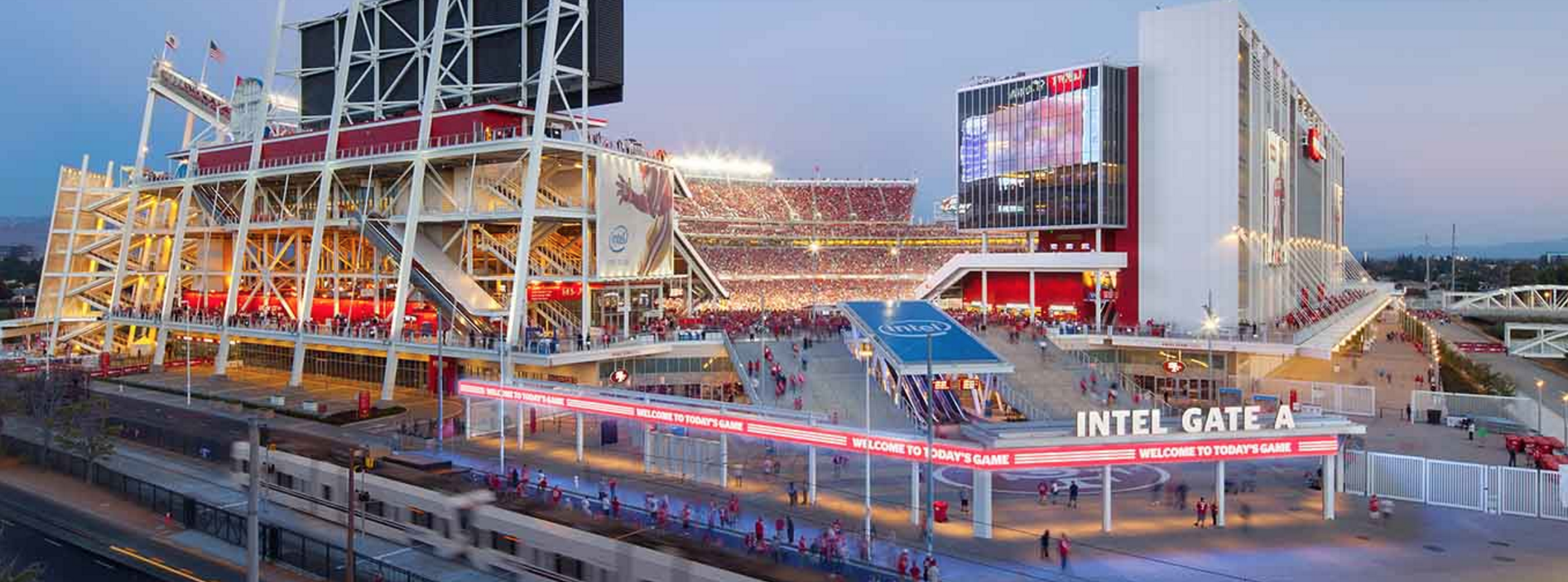
49ers Levi’s Stadium, designed by HNTB Architecture and upgraded by Populous; Santa Clara, California
A decade later, Levi’s Stadium is undergoing a $200 million upgrade led by Populous (architect), Devcon Construction (contractor) and WJHW (audio-visual consultant). While the renovation maintains the stadium’s original structure, it reinforces its technological and environmental performance with new 4K video boards, next-generation connectivity and enhanced energy efficiency. These improvements ensure the stadium remains at the forefront of innovation among similar venues as it prepares to host global events, including the upcoming Super Bowl LX in 2026 and several games for the 2026 FIFA World Cup.
The following ten facts trace the evolution of Levi’s Stadium since its 2014 debut, showcasing how the fusion of design innovation and digital technology continues to shape the architecture of contemporary sports and entertainment.
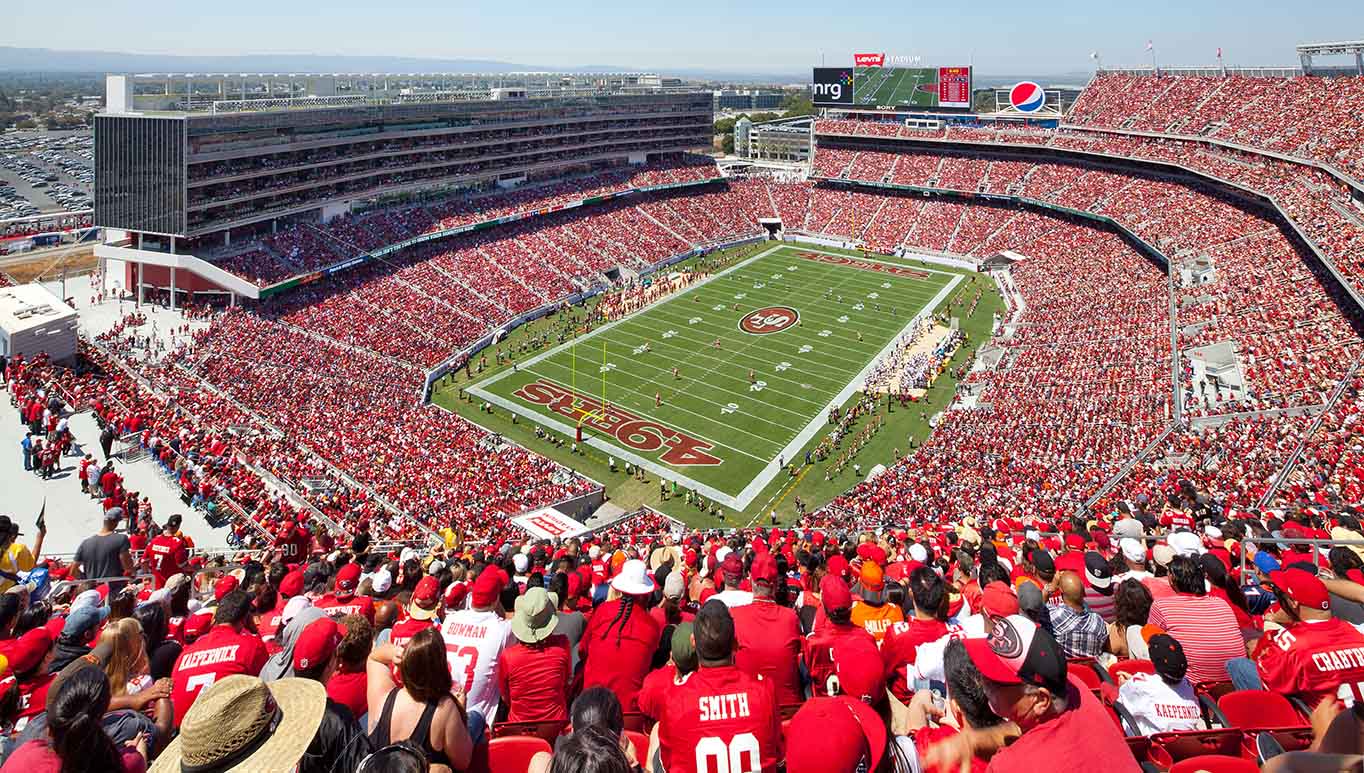
49ers Levi’s Stadium, designed by HNTB Architecture and upgraded by Populous; Santa Clara, California
1. Designed and built in 2014, Levi’s Stadium was envisioned as a model for the next generation of sports venues, merging advanced technology, fan comfort and environmental responsibility. The design was to reflect California’s progressive values and Silicon Valley’s technological identity. With this vision, the stadium was marketed as the “most technologically advanced sports venue to ever host a Super Bowl.”
2. Situated in Santa Clara, California, Levi’s Stadium was designed as an open-air venue that takes advantage of Northern California’s mild climate while setting new standards for environmental performance when it opened in 2014. In fact, the stadium became one of the first NFL venues to achieve LEED Gold certification, demonstrating the state’s commitment to sustainability. Its sustainable features, including orientation, shading, and natural airflow strategies, minimize energy use and enhance spectator comfort, reflecting the region’s leadership in climate-responsive design.
Levi’s Stadium incorporates a 27,000-square-foot green roof that not only reduces stormwater runoff, but also supports local biodiversity. The stadium also integrates locally sourced materials, recycled water systems, and over 1,000 solar panels, contributing to the stadium’s net-zero energy operation. Together, these features rooted Levi’s Stadium in its local context and positioned it as a model for environmentally conscious sports architecture from the moment it opened.
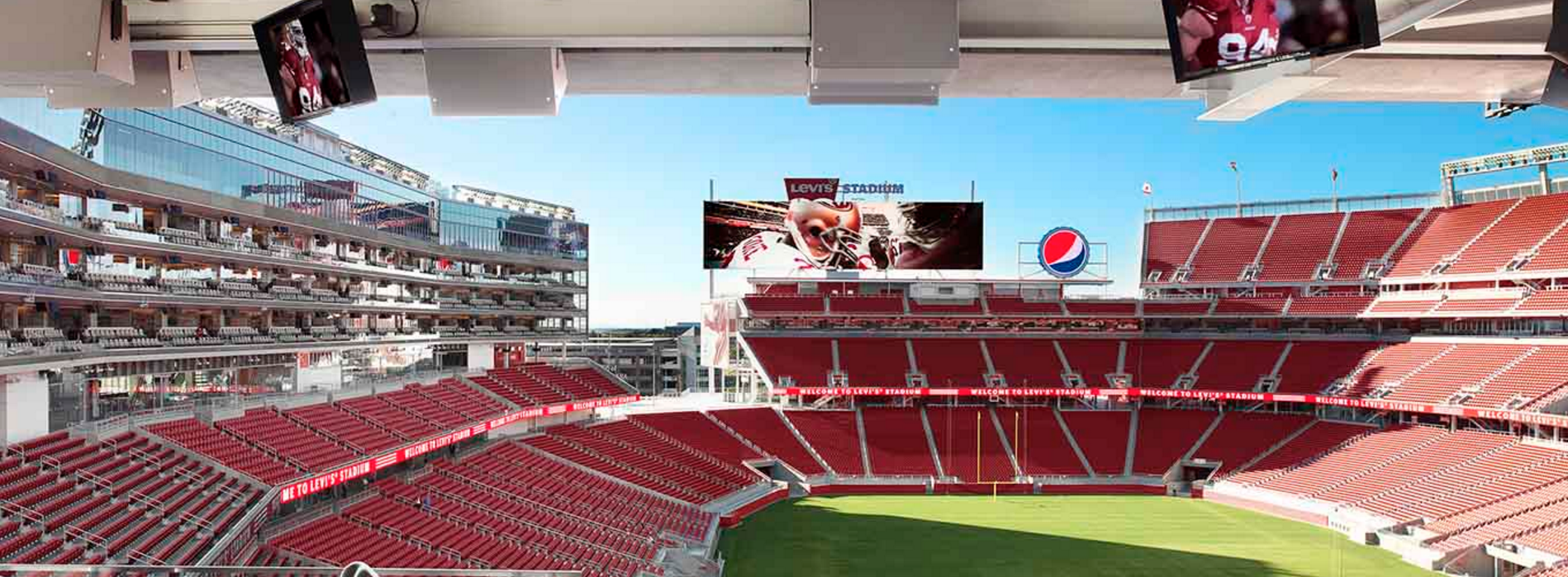
49ers Levi’s Stadium, designed by HNTB Architecture and upgraded by Populous; Santa Clara, California
3. Levi’s Stadium demonstrates its commitment to sustainable transportation through its convenient bicycle facilities, including ample bike racks and secure parking areas for cyclists. For those coming from farther away, the stadium offers shuttle services connecting key locations in Santa Clara, as well as public transit options, including light rail and bus network.
4. The architecture showcases transparency, openness, and flexibility with expansive glass façades and open concourses, offering panoramic views of nearby hills and the city. Beyond the arena bowl, indoor-outdoor lounges and terraces extend the social experience, encouraging movement and interaction. The idea behind the design was to make the stadium feel less like an enclosed arena and more like an open, flexible, and bright public space. The design’s clean lines and light materials evoke the clarity and precision of Silicon Valley’s tech campuses.
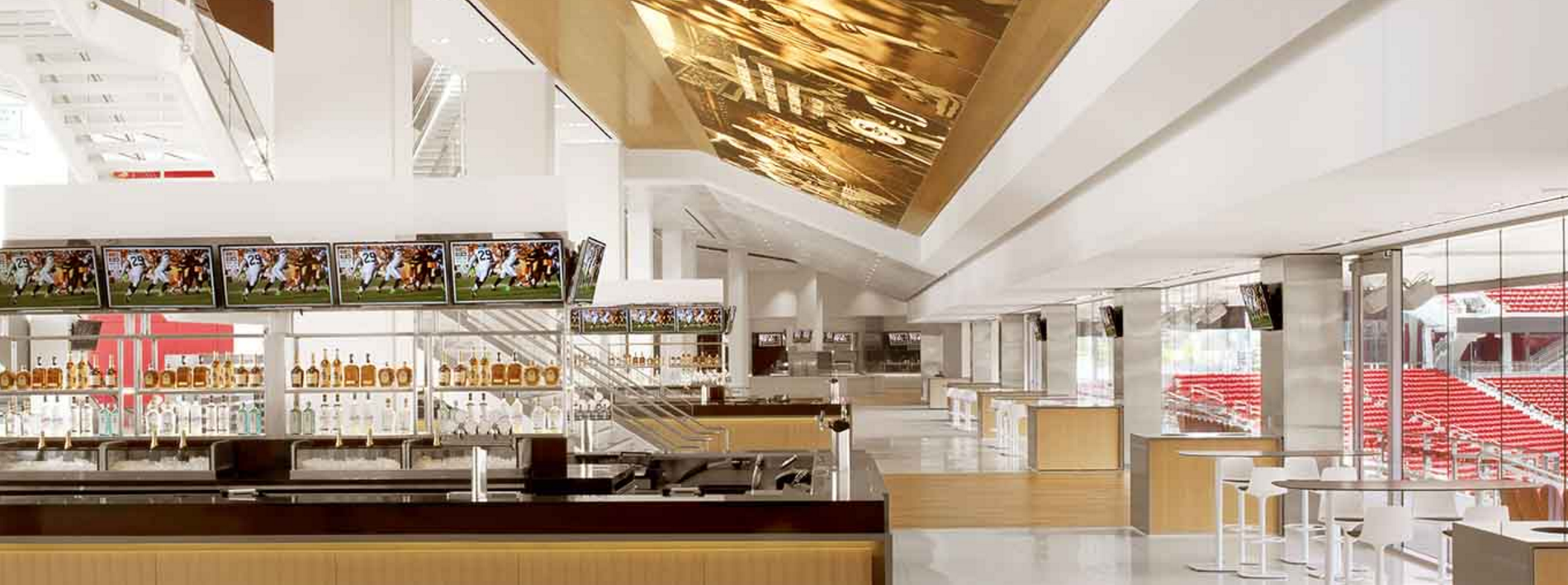
49ers Levi’s Stadium, designed by HNTB Architecture and upgraded by Populous; Santa Clara, California
5. When it first opened, the stadium was dubbed the “Smart stadium”. It featured more than 1,200 miles of data cable and a 40-Gbps fiber-optic cable backbone, supporting high-speed Wi-Fi capable of delivering broadband speeds 40 times faster than any other NFL stadium at the time; a mobile app allowed fans to order food, stream instant replays, and navigate the venue, making the experience at the stadium more interactive and engaging, a compelling incentive to leave the comfort of home for the live game. The 49ers assembled a team of over 30 technologists, including Dan Williams, the first network engineer at Facebook, to build the stadium’s network, including the Kezar ticket scanning system and the Levi’s Stadium mobile app. The 49ers also secured partnerships with various prominent tech companies, such as Comcast, Intel, and Brocade, to ensure the stadium’s infrastructure was state-of-the-art.
6. A decade after its debut, the San Francisco 49ers launched a $200 million renovation of Levi’s Stadium to prepare it for upcoming global events and reaffirm its standing as a technologically and environmentally advanced venue. The project is led by Populous (design architect) and Devcon Construction (contractor), with WJHW overseeing audio-visual systems and bringing experience from other major NFL and FIFA stadium projects, such as the Allegiant Stadium in Las Vegas, Nevada, and the U.S. Bank Stadium in Minneapolis, Minnesota.
While the original stadium was very advanced in 2014, digital and display technologies, connectivity expectations, and premium fan spaces have evolved quickly. To keep pace, the renovation introduces new ultra-high-resolution 4K video boards, expanded LED-display installations, upgraded Wi-Fi 6 and 5G Distributed Antenna System (DAS) connectivity, modernized suites and club spaces, field lighting improvements, and updated concessions and app-driven services. These improvements ensure that Levi’s Stadium will remain at the forefront of technological innovation, performance, and spectator experience.
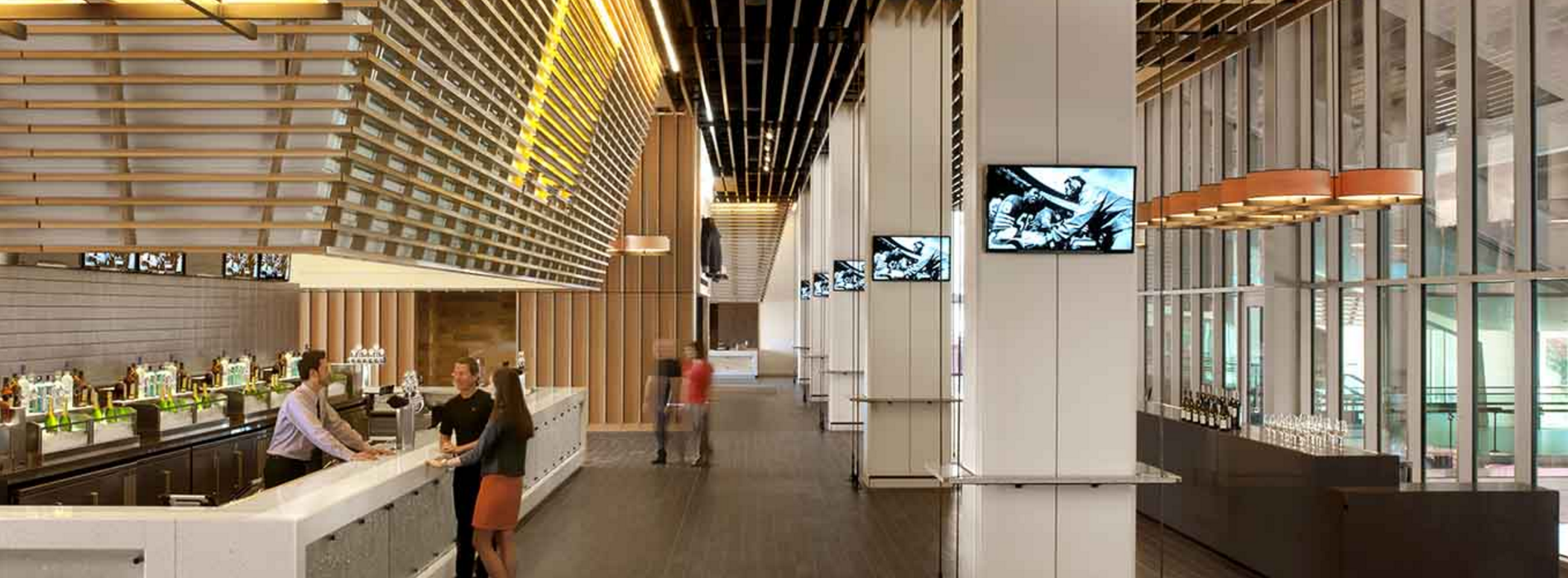
49ers Levi’s Stadium, designed by HNTB Architecture and upgraded by Populous; Santa Clara, California
7. From a sustainability standpoint, the stadium’s upgrade project introduces energy-efficient lighting that lowers power use. Water management has been improved with low-flow fixtures, smart irrigation, and better stormwater management. These upgrades continue HNTB Architecture‘s original green design goals.
8. Adding a roof or large shade structure to Levi’s Stadium has been discussed since the stadium opened in 2014, mainly because fans can experience discomfort from direct sunlight during afternoon games. However, such additions are not feasible. The stadium is close to San Jose International Airport, and Federal Aviation Administration (FAA) regulations prevent construction that could interfere with flight paths. Structurally, the stadium also cannot support a large overhead canopy without major and costly modifications. To improve fan comfort without a roof, the 49ers have implemented other measures, such as reducing bottled water prices, offering free filtered water stations, and scheduling events to avoid the hottest parts of the day whenever possible.
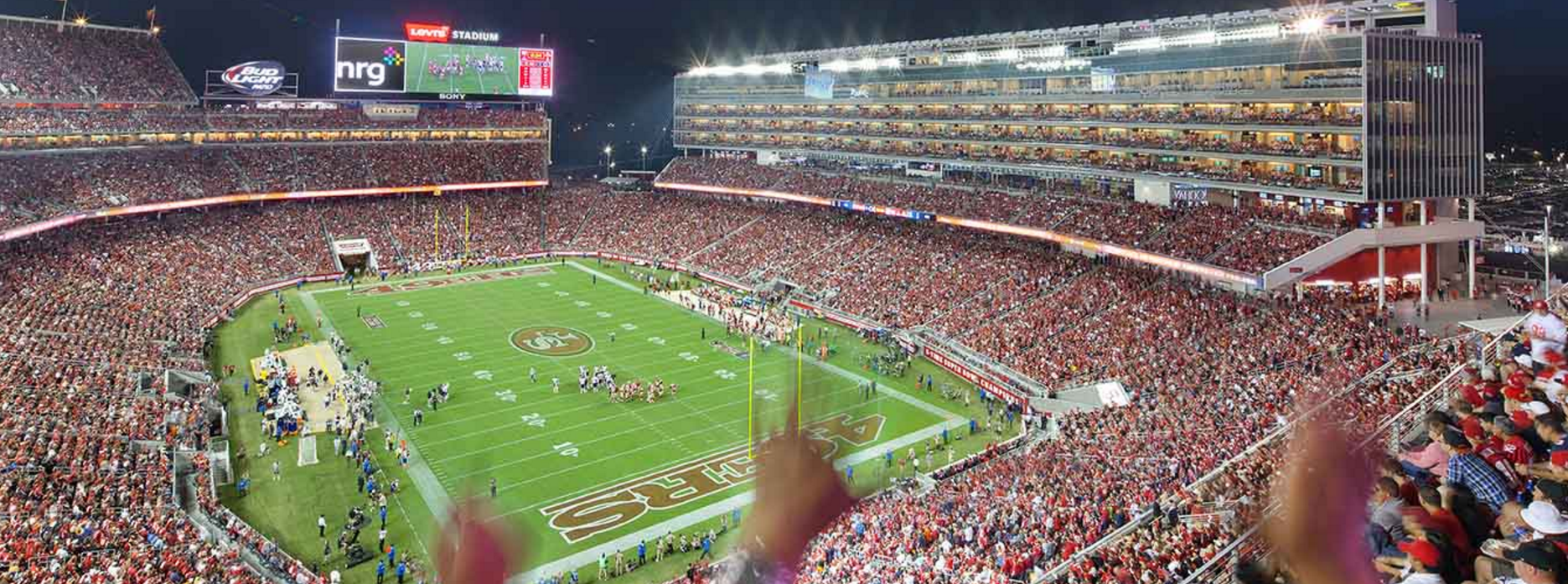
49ers Levi’s Stadium, designed by HNTB Architecture and upgraded by Populous; Santa Clara, California
9. Levi’s Stadium will host Super Bowl LX in February 2026, one of the biggest sporting events in the world, along with several FIFA World Cup 2026 games only a few months later, attracting international attention to the stadium and the Silicon Valley region. However, these back-to-back events present a significant challenge: converting the stadium from an NFL venue to a FIFA-compliant soccer field and back again without disrupting broadcasts, crowd flow or even the surrounding neighborhoods. This transition will involve bowl, turf, and drainage modifications. The San Francisco 49ers have committed to covering the costs associated with hosting the World Cup games at Levi’s Stadium.
10. Beyond these marquee events, the stadium is strengthening its reputation as a world-class venue, hosting other international sporting competitions, including college football, soccer, and rugby, alongside major concerts. In July 2024, the Rolling Stones delivered an electrifying performance to a packed crowd, and more recently, Metallica took over Levi’s Stadium last summer, showcasing the venue’s versatility beyond sports.
Architects: Want to have your project featured? Showcase your work by uploading projects to Architizer and sign up for our inspirational newsletters.
The post Levi’s Stadium 2026: 10 Architectural Facts to Know Before Super Bowl LX appeared first on Journal.







































